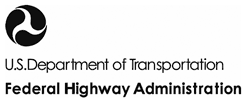Impacts of Technology Advancements on Transportation Management Center Operations
Final Report
Contact Information: Operations Feedback at OperationsFeedback@dot.gov.
Printable version [PDF 8.3MB]
You may need the Adobe® Reader® to view the PDFs on this page.
U.S. Department of Transportation
Federal Highway Administration
Office of Operations (HOP)
1200 New Jersey Avenue, SE
Washington, DC 20590
www.ops.fhwa.dot.gov
Publication #: FHWA-HOP-13-008

Table of Contents
Foreword
Executive Summary
Chapter 1 Introduction
1.1 Background
1.2 Report Objectives
1.3 Report Organization
1.3.1 Chapter 1: Introduction
1.3.2 Chapter 2: Literature Review
1.3.3 Chapter 3: Top Trends and Issues of TMC Operation
1.3.4 Chapter 4: Successful Practices and Strategies for TMC Managers
1.3.5 Chapter 5: Program-Level Implementation and Integration
1.3.6 Chapter 6: Summary and Conclusions
1.3.7 Chapter 7: References
Chapter 2 Literature Review
2.1 Big Picture Influencers
2.2 Data and Communications Category
2.2.1 Key Development: Increasing involvement of private third-parties in ITS data
2.2.2 Key Development: Increasing diversity of sources, coverage, types, and quantity of data (including from third-party sources)
2.2.3 Key Development: Developments in next-generation wireless communications
2.2.4 Key Development: Incresing coverage of rural freeways and arterials
2.3 Connected Vehicle Category
2.3.1 Key Development: Seamless integration between vehicle and personal Smartphone and other mobile communication devices
2.4 Agency Processes Category
2.4.1 Key Development: Toll and other Pricing operations in TMCs
2.4.2 Key Development: Accelerating ITS system design and implementation cycles
2.4.3 Key Development: TMC Operator and Manager Responsibilities Not Being Aligned with Civil Service Classifications
2.5 Control Technologies Category
2.5.1 Key Development: Active Transportation and Demand Management (ATDM) – a mindset using a set of tools to be responsive to demands and conditions
2.5.2 Key Development: Launch of Integrated Corridor Management (ICM) initiatives
2.5.3 Key Development: Arterial management, including adaptive signal control
2.5.4 Key Development: Emergence of decision-support systems
2.5.5 Automation of TMC functions
2.6 Traveler Information Category
2.6.1 Key Development: In the future, in-vehicle applications will be provided through handheld devices that interface with the car rather than built-in systems that become outdated over the lifespan of the vehicle.
2.6.2 Key Development: Predictive analysis and forecasting
Chapter 3 Top Trends and Issues of TMC Operations
3.1 Trends Emerging from Within the Transportation Community
3.1.1 A Nimble Service-Oriented Program Mindset and Organizational Structure
3.1.2 Active Transportation and Demand Management (ATDM) Concept and Toolkit
3.1.3 Accommodating Toll and Other Pricing Operations in TMCs
3.1.4 Performance Monitoring and Management
3.2 Trends and Technologies that TMCs Can Adapt and Take Advantage of from Outside the Transportation Community
3.2.1 Automation Tools
3.2.2 Involvement of Third Parties in Data Collection, Data Analysis, and Provision of Traveler Information
3.2.3 Mobile Communications and Wireless Networks
3.2.4 Social Media for Traveler Information and Crowdsourcing
Chapter 4 Successful Practices and Strategies for TMC Managers
4.1 Trends Emerging from Within the Transportation Community
4.1.1 A Nimble Service-Oriented Program Mindset and Organizational Structure
4.1.2 Active Transportation and Demand Management (ATDM) Concept and Toolkit
4.1.3 Accommodating Toll and Other Pricing Operations in TMCs
4.1.4 Performance Monitoring and Management
4.2 Trends and Technology that TMCs can Adapt and Take Advantage of from Outside the Transportation Community
4.2.1 Automation Tools
4.2.2 Involvement of Third Parties in Data Collection, Data Analysis, and Provision of Traveler Information
4.2.3 Mobile Communications and Wireless Networks
4.2.4 Social Media for Traveler Information and Crowdsourcing
4.3 Cross-Reference between Trends and Strategies
Chapter 5 Program-Level Implementation and Integration
5.1 Internal TMC Processes
5.1.1 Description
5.1.2 Tools
5.2 TMC Manager Checklists for Internal Processes
5.3 Coordination of TMC Processes with the Broader Organizational Context
5.3.1 Description
5.3.2 Tools
5.4 TMC Manager Checklists for Coordination of TMC Processes within the Broader Organizational Context
Chapter 6 Summary and Conclusions
6.1 Summary
6.2 TMC Manager Programmatic Checklist of Recommended Actions
6.3 Conclusions
Chapter 7 References
Appendix A TMC Manager Checklists for Internal Processes
Appendix B TMC Manager Checklists for Coordination of TMC Processes within the Broader Organizational Context
Appendix C TMC Manager Programmatic Checklist of Recommended Actions
List of Tables
Table 1: Successful Practices in Mobile Platform Traveler Information
Table 2: Top Trends with Applicable Strategies to be Considered by TMC Operators
Table 3: Internal TMC Process Checklist for Technical Processes
Table 4: Internal TMC Process Checklist for Plans and Preparedness
Table 5: Internal TMC Process Checklist for Staff Development
Table 6: Broader Organizational Context Checklist for Planning
Table 7: Broader Organizational Context Checklist for Visibility
Table 8: Broader Organizational Context Checklist for Communication
Table 9: Recommended Actions Checklist for Selecting Strategies
Table 10: Recommended Actions Checklist for Staying Informed on Technological Advancement
Table 11: Recommended Actions Checklist within the Broader Organizational Context
List of Figures
Figure 1: Top Trends and Issues of TMC Operations
Figure 2: ATDM Approach
Figure 3: Top Trends and Issues of TMC Operations with Section References
Figure 4: Changing Elements of Transportation Agency Operations
Figure 5: ATDM Areas with Example Approaches
Figure 6: Percentage of 41 States and DC Using Social Media Tools in 2012
Figure 7: Relation of Chapter 3 to Chapter 4
Figure 8: Indicators of Potential ATM Deployment
Figure 9: Initial and Future RIDOT TMC Performance Measures
Figure 10: Illustration of Primary and Secondary Associations among Trends and Strategies
Figure 11: Chapter 3, 4, and 5 Flow
Figure 12: Internal TMC Process Tools
Figure 13: Broader Organization Context Tools
Figure 14: Top Trends and Issues of TMC Operations